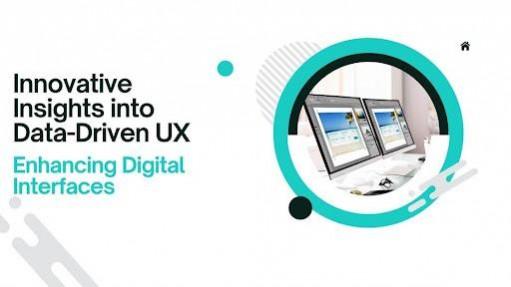
User experience (UX) design plays a vital role in today's digital landscape. Raymond Lazarus explores how data analytics is transforming UX design by offering valuable insights that enhance digital interfaces. The author dives into the integration of large data volumes, time series analysis, browser storage, and API performance to craft more intuitive and user-centric experiences.
Data Analysis: The Backbone of UX Design
The integration of data analysis into UX design has become a game-changer. By leveraging vast volumes of user interaction data, designers can understand user behavior more comprehensively. This data-driven approach allows for the creation of interfaces that not only meet current user needs but also adapt to evolving trends. For instance, analyzing large datasets enables designers to identify patterns and trends that may otherwise be overlooked, leading to inclusive designs that cater to a diverse range of users.
Time Series Analysis: Predicting Future User Needs
Time series data analysis is crucial for understanding how user behavior changes over time. By examining historical data, designers can identify seasonal trends and long-term shifts in preferences. This proactive approach allows for design modifications that anticipate future user needs, ensuring that digital products remain relevant and user-friendly over time. Temporal analysis provides designers with the tools to stay ahead of user expectations, ultimately resulting in a more engaging user experience.
Browser Storage Utilization: Enhancing Personalization and Performance
Browser storage data provides valuable insights into user preferences by tracking saved settings and frequently accessed content. Understanding these preferences enables designers to craft personalized experiences tailored to each user. Additionally, efficient management of browser storage enhances application performance by reducing load times. This improvement results in a smoother, more satisfying user experience, which in turn minimizes frustration and fosters greater engagement. By leveraging browser storage effectively, designers can create more responsive and user-centric digital products.
API Response Times: The Key to Responsive Interfaces
Fast API response times are critical for maintaining smooth and responsive interfaces. Slow responses can lead to user frustration and even product abandonment. By optimizing API response times, designers can significantly improve perceived usability, especially in applications that require real-time data updates. This optimization not only enhances user satisfaction but also contributes to the overall success of the digital product.
The Risks of Neglecting Data Analysis in UX Design
Failure to incorporate data analysis into UX design can result in costly mistakes, such as user dissatisfaction, increased support costs, and potential loss of market share. Organizations that neglect the importance of user data face significant financial and reputational damage. This underscores the need to integrate data analysis throughout the entire design lifecycle, from initial concept to post-launch iterations. By doing so, companies can ensure their products remain relevant, user-friendly, and competitive in an ever-changing market.
Innovative Approaches to Data-Driven UX Design
Integrating advanced data analysis techniques such as big data analytics, machine learning, data visualization, and A/B testing into UX design practices can greatly enhance the development process. These techniques help uncover user behavior patterns, predict user preferences, and communicate UX insights effectively. By adopting a continuous data analysis approach, designers can align their designs with evolving user needs, creating more intuitive, inclusive, and satisfying digital experiences.
In conclusion, Raymond Lazarus emphasizes the vital role of data analysis in UX design, advocating for a shift towards more data-centric practices. By employing data-driven methodologies, designers can craft digital interfaces that not only meet current user expectations but also anticipate future needs, fostering deeper engagement. As the digital landscape continues to evolve, organizations that embrace a data-centric approach will be better positioned to create intuitive, inclusive experiences, securing a competitive edge and ensuring long-term success in the market.









